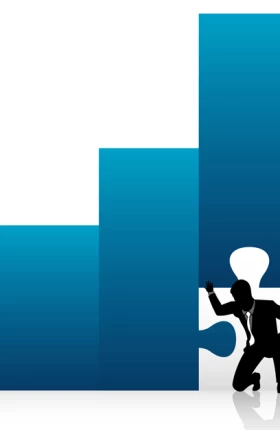By reshaping the way employees find challenging opportunities, new ITM programs are helping women grow their careers.
Companies are facing a moment of reckoning in the workplace. They are struggling to find talent to advance their strategic priorities, and they are seeking to improve gender equity and open pathways for women to grow and develop. In the process, most are overlooking an asset that can help with both priorities: their internal talent mobility program (ITM).
But some companies are reinventing their ITM programs to go beyond the traditional ways of tapping in-house talent for promotions and evolving business priorities. This new generation of ITM programs is democratizing access to opportunity and helping employees chart their careers at a micro level—both of which have particular value for women.
Access and agency are important for women’s retention and advancement. Recent studies by researchers at the Massachusetts Institute of Technology and New York University have found that lateral career opportunities are more than twice as effective as compensation in predicting employee retention. And while stretch assignments can be critical for career advancement, studies have found that women are less likely than men to report receiving those opportunities—even when they explicitly say they are interested in working on more challenging projects.
The new ITM programs are deeply embedded in talent operating models and career development processes. They are also designed to make the most of innovative HR technologies, such as digital talent marketplaces. These programs are thus better equipped than their predecessors to normalize skills-based career mobility as part of the development journey for women.
The catch? Many business leaders haven’t yet updated their ITM models. Once they do, they will be better equipped to provide equitable career-growth opportunities, which will help attract and retain diverse talent in today’s increasingly dynamic environment.
Equal Access to Opportunity
Data gathered recently by BCG, in collaboration with the talent marketplace provider Gloat, confirms that the new ITM programs can increase assignments for women. Four attributes are key to success:
- Making All Opportunities Visible to All. Historically, many corporate opportunities have been allocated on the basis of “who you know, not what you know.” But the new ITM programs help address gender inequities by encouraging or requiring opportunities to be posted publicly, making them visible to a broader slate of candidates and giving women an equal opportunity to apply. Publicly posted opportunities typically reveal a wide variety of pathways, including linear promotions, lateral job transfers (such as moving employees from customer service positions into sales roles), and special project assignments (such as setting up product launch teams) that draw employees from several functions.
- Identifying Potential Matches on the Basis of Skills and Preferences. To address gender inequities at the speed and scale of business today, ITM programs are increasingly using two-way talent marketplaces. Managers post opportunities on these marketplaces, which suggest potential matches to both posting managers and employees on the basis of employees’ profiles. The platform can identify employees’ skills given their work experience and training history. By suggesting good-fit possibilities, a talent marketplace can help encourage women to apply and expand the pool of potential candidates for managers seeking recruits. When such marketplaces are in place, data from Gloat suggests that women tend to apply for internal opportunities at an equal or higher rate than men—and are matched accordingly. In more traditional in-house labor markets, women, compared with men, participate at a disproportionately lower rate and are typically given fewer opportunities.
- Explicitly Working to Mitigate Bias. To reduce bias, talent marketplaces can hide bias-forming parameters, such as gender, in employee profiles. In addition, talent marketplaces can make personal qualities easier to track and report, making it easier to intervene and mitigate bias in hiring decisions. Seagate Technology has implemented such a talent marketplace. It suggests jobs to employees on the basis of their skills and aspirations. Characteristics such as location, age, gender, and ethnicity do not factor into the platform’s suggestions, and it has mechanisms to mitigate the risk of bias in internal hiring. The new marketplace has led to a 58% increase in the participation and assignment of women to open internal positions.
- Reducing the Risks Associated with Switching Jobs. To increase the use of ITM programs, employees must be able to look for opportunities without first alerting their manager. This is important, especially for women. A recent study of exiting employees found that women were less likely than men to ask about internal opportunities, perhaps because they fear repercussions or worry that their manager will pressure them to stay put. When companies configure their talent marketplaces to provide visibility into all opportunities, employees can browse open positions without those concerns.
In addition to advancing women’s access to career opportunities, there are many other benefits to the new generation of ITM programs. For example: employee engagement and satisfaction tend to improve; companies can typically save money by reducing their reliance on external recruiting and contracting; and teams become more diverse, as employees are from a variety of backgrounds and ones that may be different from their team leader.
By suggesting good-fit possibilities, a talent marketplace can help encourage women to apply for positions.
Because more than half of the matches in new ITM programs are across regions and functions, these programs also help break down organizational silos, enable better use of talent across a company, and offer individuals opportunities that they would not have in a model based on who employees know. Equally beneficial, managers can find talent in their company that they never would have encountered without these programs.
Companies are finding it easier to implement and support new ITM programs on a broader scale in part through their use of internal talent marketplaces (such as those provided by Eightfold AI, Fuel50, Gloat, and Hitch).
Embedding ITM Programs in Talent Models and Processes
Findings from BCG’s demand-centric growth analysis of more than 3,000 US professional women suggest that new ITM programs can play a role in increasing women’s job satisfaction and retention levels. Our analysis looked at employees as if they were customers making decisions about their careers. Thus, it got to the root of the emotional and functional needs involved in making those decisions.
We found a strong correlation between the satisfaction of needs and key indicators of positive employment outcomes: happiness, motivation, and long-term retention. At an aggregate level, the top five drivers of positive employment outcomes have to do with emotional needs: feeling valued, supported, fairly treated, respected, and important. Comparatively, functional needs, such as compensation and benefits, were less determinative on decisions to stay or leave, although they are table stakes and must, at a minimum, be competitive with other employment options.
Thoughtfully constructed ITM programs, deeply embedded in talent operating models and career development processes, will provide women with better growth opportunities and make the process of identifying them more seamless. This shift can change women’s experience navigating their careers, so that they feel valued, supported, and respected in the process. In short, by normalizing career mobility and creating a programmatic approach, companies can give women more agency and strengthen their connections in moments of truth.
ITM programs can enable women to broaden their horizons, sample new experiences, develop new skills, and expand their networks. These programs can also help women accommodate changes in life circumstances, such as caregiving responsibilities, that may require more flexibility at times. Unlike many current mobility experiences for women that take the form of accommodations that inadvertently stall their advancement, more broad-based and skills-based ITM programs can aid career advancement and skill development.
Consider the hypothetical example of Claire, a rising leader in a company without a strong ITM program. She has led initiatives, has great performance reviews, and is on track for a promotion. But she’s frustrated that she must exhaustively network to land opportunities to work on stretch projects. Though she’d like more flexibility after she returns from maternity leave, she’s worried about creating the impression that she’s getting special treatment.
Companies can give women more agency by normalizing career mobility and creating a programmatic approach.
Now, let’s imagine an alternative: Claire works for a company with a strong ITM program. She was introduced to the concept of internal mobility when she joined. She knows women at all levels who have signed up for various mobility opportunities.
Claire’s company encourages her to share her goals and aspirations broadly, so others can support her in identifying pathways that can help her realize them. In addition, in career conversations, her advisor regularly asks about her progress toward her goals. Such discussions are a standard part of the career-planning conversations that advisors have with employees at least once per quarter. Claire’s advisor informs her about training opportunities to aid her transitions, and as she embarks on new assignments, her office invites her to share what she learns with others, just as others have shared their experiences with her.
When ITM programs are integrated with talent operating models, talent mobility options are typically discussed as part of career-planning sessions, and learning and development offerings are designed to support lateral career moves. By creating a foundation of job matching based on skills, ITM programs can also serve as a starting point for rethinking career paths and compensation approaches. And their success can potentially lead to a more strategic approach to diversity and inclusion .
The consumer products company Unilever is an organization that has tried to get out in front on internal mobility. The company rolled out its talent marketplace to its global workforce from 2018 through 2019. The results so far have been promising. More than 80% of the roughly 65,000 eligible members of its online workforce have completed so-called rich profiles on the platform. During the first eight months of the pandemic, Unilever moved more than 9,000 employees into new jobs and unlocked close to 1 million hours of trapped work capacity. Most new assignments have been cross-functional and across countries, and more than 60% of those opportunities have been assigned to women.
ITM programs can serve as a starting point for rethinking career paths and compensation approaches.
Unilever has embedded talent mobility into its company-wide employee development practices. For example, employees participate in purpose workshops, where they share stories about hobbies, childhood passions, and their proudest moments. In the process, they identify the threads that tie their motivations together and point to their personal purpose. Each employee’s purpose statement becomes the core of that person’s career journey and is reflected in their Future Fit plan. These plans outline ambitions, skills that need development, and potential opportunities for learning, inside and outside the company. Unilever’s ITM program then helps employees find ways to realize their aspirations.
Given today’s talent challenges and the uneven progress on women’s advancement in the workforce, companies can no longer afford to overlook their ITM program. Companies can use it as a starting point to embed gender equity into their culture and people processes. With a full-scale ITM program in place, companies will be better equipped to manage talent in today’s increasingly dynamic environment—and create a more equitable workplace in the process.









